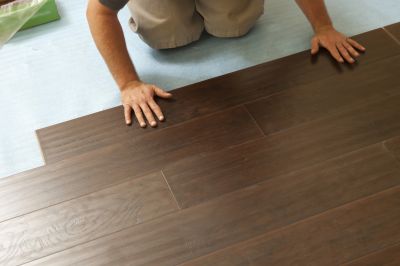Leading Supplies For Lvp Floor Installations You Can Trust
Discover reliable products designed to make your LVP flooring project easier, more durable, and visually stunning.
 Installing luxury vinyl plank (LVP) flooring requires a combination of the right products to ensure a durable, smooth, and professional-looking finish. From underlayments to adhesives and surface preparation tools, selecting the appropriate items can significantly influence the installation process and final outcome. Proper preparation, including subfloor assessment and cleaning, sets the foundation for a successful installation. Using quality products designed specifically for LVP can help prevent issues such as uneven surfaces, gaps, or damage over time.
Installing luxury vinyl plank (LVP) flooring requires a combination of the right products to ensure a durable, smooth, and professional-looking finish. From underlayments to adhesives and surface preparation tools, selecting the appropriate items can significantly influence the installation process and final outcome. Proper preparation, including subfloor assessment and cleaning, sets the foundation for a successful installation. Using quality products designed specifically for LVP can help prevent issues such as uneven surfaces, gaps, or damage over time.
Top Overall Option
Premium Underlayment System
A high-quality underlayment system designed specifically for LVP installations provides a smooth, stable base that can help reduce noise and improve comfort underfoot. It often features soundproofing qualities, moisture barriers, and cushioning properties, making it suitable for a variety of subfloor types. Using a reliable underlayment can contribute to a more even surface and protect the flooring from minor subfloor imperfections, enhancing the overall durability of the installation.
Types of Products For Lvp Floor Installations
Underlayment Sheets
Pre-cut or roll-based underlayment sheets provide a cushioning layer that helps with sound absorption and moisture protection.
Self-Adhesive Tapes
Used to seal seams and prevent moisture infiltration, ensuring a tight, secure installation.
Floor Adhesives
Specialized adhesives formulated for vinyl flooring help secure planks and prevent shifting over time.
Seam Sealants
Sealants designed to fill gaps and seams, creating a seamless appearance and preventing dirt accumulation.
Transition Strips
Metal or vinyl strips that provide smooth transitions between different flooring types or rooms.
Floor Spacers
Tools used to maintain consistent gaps around the perimeter for expansion and contraction.
Moisture Barriers
Protects against moisture rising from concrete or subfloor, especially in basements or bathrooms.
Cleaning Solutions
Gentle cleaners designed to prepare the subfloor and remove debris before installation.
Floor Leveling Compound
Used to fill in low spots or uneven areas on the subfloor for a flat surface.
Cutting Tools
Utility knives and saws for precise cutting of planks and underlayment materials.
Rolling Pins or Hand Rollers
Tools to press down and secure the flooring after installation, reducing air bubbles.
Measuring Tapes and Squares
Ensure accurate measurements and straight cuts for a professional fit.
Popular Choices
Flexible rolls that provide a quick and easy way to cover large areas with consistent cushioning.
Convenient for temporarily holding planks in place during installation.
Formulated for long-lasting bond strength on various subfloor types.
Helps create a seamless look by securely bonding seams between planks.
Specialized cleaning solutions for preparing and maintaining vinyl floors.
Quick-setting compounds for smoothing out uneven subfloor surfaces.
Designed specifically for vinyl and LVP transitions, ensuring smooth and durable edges.
Effective in preventing moisture damage, especially in high-humidity areas.
Essential for precise cuts and trimming of planks and underlayment.
Helps press down LVP planks for better adhesion and a smooth surface.
In addition to the foundational materials, accessories like spacers, transition strips, and seam sealants are essential for achieving a seamless look and ensuring the longevity of the flooring. Whether installing over concrete, wood, or existing flooring, understanding the specific requirements of each surface will guide the choice of compatible products. It is also important to consider the environment where the flooring will be installed, such as moisture levels and temperature conditions, to select products that perform well under those circumstances.
The installation process can vary depending on the product types used, but having a comprehensive set of tools and materials is key. Proper underlayment choices can help with soundproofing and cushioning, while adhesives and sealants contribute to stability and moisture resistance. For DIY enthusiasts and professionals alike, choosing versatile, high-quality products can make the installation more efficient and produce a more polished result. Carefully reviewing product specifications and compatibility with LVP flooring will help ensure a successful and durable installation.
Key Buying Considerations
- Compatibility with existing subfloor materials and conditions
- Moisture resistance features, especially in basements or bathrooms
- Soundproofing qualities to reduce noise transmission
- Ease of installation for DIY projects or professional setups
- Durability and wear resistance suitable for high-traffic areas
- Flexibility and cushioning to accommodate subfloor irregularities
- Seam sealing and moisture barriers for added protection
- Compatibility with the specific type of LVP flooring being installed
- Ease of cutting and handling tools for precise installation
- Availability of matching transition and edging materials
- Product reviews and ratings for reliability and performance
- Cost considerations relative to project scope and quality
- Environmental conditions such as temperature fluctuations and humidity
- Brand reputation and manufacturer support
- Storage and shelf life of materials before installation
